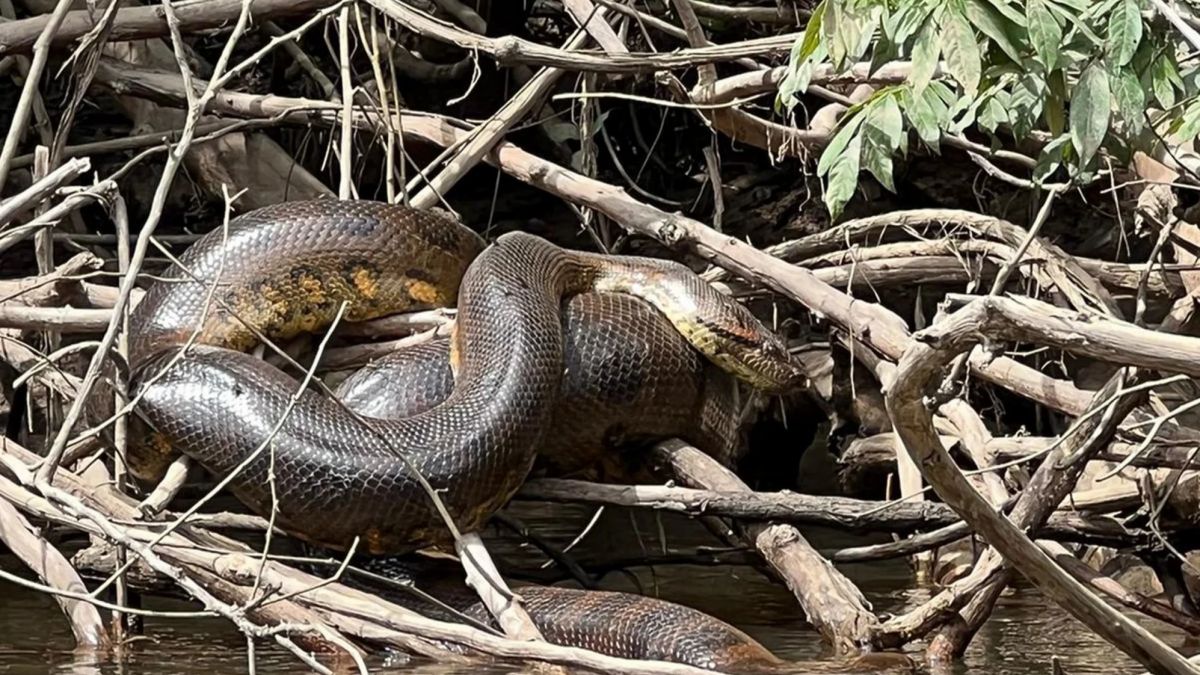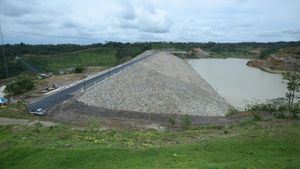JAKARTA - Scientists who conducted research in the Amazon rainforest managed to find a new snake species, reportedly the largest snake in the world today.
A team of researchers from the University of Queensland traveled to the Amazon in Ecuador, to look for previously undocumented northern green anaconda (Eunectes akayima), following an invitation from the Waoroni community to observe anaconda "reportedly as the largest ever" according to scientists.
The team joined the hunters on a 10-day expedition to Bameno in the Baihuaeri Waoroni Region, before rowing along the river system to "find some anaconda hiding in shallow waters, waiting for prey," Professor Bryan Fry, a biologist from the University of Queensland, who led the team, said in a statement, quoted by CNN March 1.
Anaconda is a giant snake that is not venomous found in or near waters in warm South America.
"The size of this extraordinary creature is extraordinary, a female anaconda we met measuring 6.3 meters (20.7 feet) long," Fry said of the team's discovery.
The team also said they had heard evidence of anecdotes that 7.5 meters (24.6 ft) and 500 kilograms (1,100 pounds) of snakes had been spotted in the area.
The green anakonda is the heaviest snake in the world, according to the British Museum of Natural History, which records the heaviest snake ever recorded weighing 227 kilograms (500 pounds). It is 8.43 meters (27.7 ft) long and 1.11 meters (3.6 ft) wide.
While other species, pythons, tend to be longer often reach more than 6.25 meters (20.5 feet), but lighter.
However, experts studying the creature found that the newly identified northern green anaconda species deviated from the southern green anaconda nearly 10 million years ago, with their genetic differences of 5.5 percent.
"This is quite significant, in comparison, humans are only about 2 percent different from chimpanzees," Fry said, with these findings described in the journal 'MDPI Diversion'.
Tim kemudian membandingkan renakonda hijau dengan spesimen lain di tempat lain, untuk menilai mereka sebagai spesies indicator kesehatan ekosistem, mengingatkan bahwa Amazon menghadapi banyak ancaman.
"Deforestation in the Amazon valley due to agricultural expansion is expected to result in habitat loss of 20-31 percent, which may impact 40 percent of Amazon's forests by 2050," Fry said.
SEE ALSO:
habitat degradation, forest fires, drought and climate change threaten rare species such as anaconda, which live in these rare ecosystems, he added.
It is known, Fry is an Australian professor of biology at the University of Queensland who for almost 20 years has been investigating an anaconda species found in South America, quoted by Reuters.
Anaconda is a very useful source of information for ecological health in the region and the potential impact of oil spills on human health in the region, Fry said.
The English, Chinese, Japanese, Arabic, and French versions are automatically generated by the AI. So there may still be inaccuracies in translating, please always see Indonesian as our main language. (system supported by DigitalSiber.id)


















